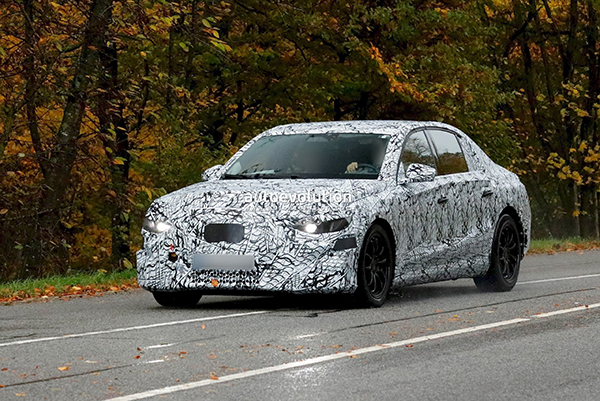Mercedes-Benz failed its electrification strategy largely because its customers disliked the pill-shaped, uninspiring design of its EVs. This is why the German carmaker is in a rush to replace the EQE with the next-generation E-Class featuring a more traditional design. The launch has been brought forward to 2027, but this means that compromises have been made. Mercedes-Benz was very confident that the pill-shaped design of the first EQ models would conquer a new generation of devoted customers. Instead, it only managed to alienate its follower base, which ultimately resulted in disappointing sales and a loss of customers. There was nothing inherently wrong with the EQE or EQS, other than not being “Benz enough” for the traditionally conservative crowd that buys Mercedes-Benz cars.
Mercedes-Benz E-Class EQ // SPY PHOTOS
Mercedes-Benz failed its electrification strategy largely because its customers disliked the pill-shaped, uninspiring design of its EVs. This is why the German carmaker is in a rush to replace the EQE with the next-generation E-Class featuring a more traditional design. The launch has been brought forward to 2027, but this means that compromises have been made.
Mercedes-Benz was very confident that the pill-shaped design of the first EQ models would conquer a new generation of devoted customers. Instead, it only managed to alienate its follower base, which ultimately resulted in disappointing sales and a loss of customers. There was nothing inherently wrong with the EQE or EQS, other than not being “Benz enough” for the traditionally conservative crowd that buys Mercedes-Benz cars.
The carmaker is now bent on changing its EV image, so it ditched the EQ sub-brand for an equally peculiar “with EQ Technology” branding. The good part is that these “EQ something” EVs will look like regular models with an electric powertrain, something that BMW has tried rather successfully for quite some time. The downside is that sharing a platform between EV and ICE powertrains means compromises have to be made.
However, if the rumors are correct, these compromises may not be necessary, as the electric E-Class won’t share its architecture with the ICE model. Instead, it will adopt the MB.EA-Medium architecture that debuted with the GLC earlier this year. This allows the German carmaker to speed up development, as the all-electric E-Class couldn’t arrive sooner. The EQE sold only 4,000 units in the US during the first nine months of 2025, representing a 62% drop from 2024.

Initially, the E-Class was supposed to share the MB.EA-Large platform with the future electric S-Class. However, Mercedes-Benz scrapped the MB.EA-Large plans last year and now intends to continue developing the EVA2 architecture that underpins the EQE and EQS. Lucky for the E-Class, the MB.EA-Medium architecture is already in production with the GLC EQ, and was an easy choice for the upcoming E-Class.
Thanks to using the GLC platform, the E-Class EQ will launch a year earlier than expected, in the second half of 2027. It will use eATS 2.0 drive units developed in-house by Mercedes-Benz, capable of developing up to 250 kW (335 horsepower) per motor. The E-Class will sport a dual-motor setup, whereas the AMG variant will use a modified architecture with a tri-motor configuration.
Mercedes-Benz has already started testing the prototypes of the upcoming E-Class EQ, as our photographers discovered. In this case, it’s difficult to assess the design direction, considering that even the lights are generic. However, since it was caught driving side by side with its gas-powered brother, it allowed for a rough comparison in shape and size.
If we’re to guess what the executive sedan will look like, we’d bet on sporting the classic chrome grille recently unveiled with the GLC and a more classic three-volume sedan silhouette. The size appears to be slightly larger than the ICE-powered Mercedes-Benz E-Class, which measures 194.8 inches (4.95 meters) in length.